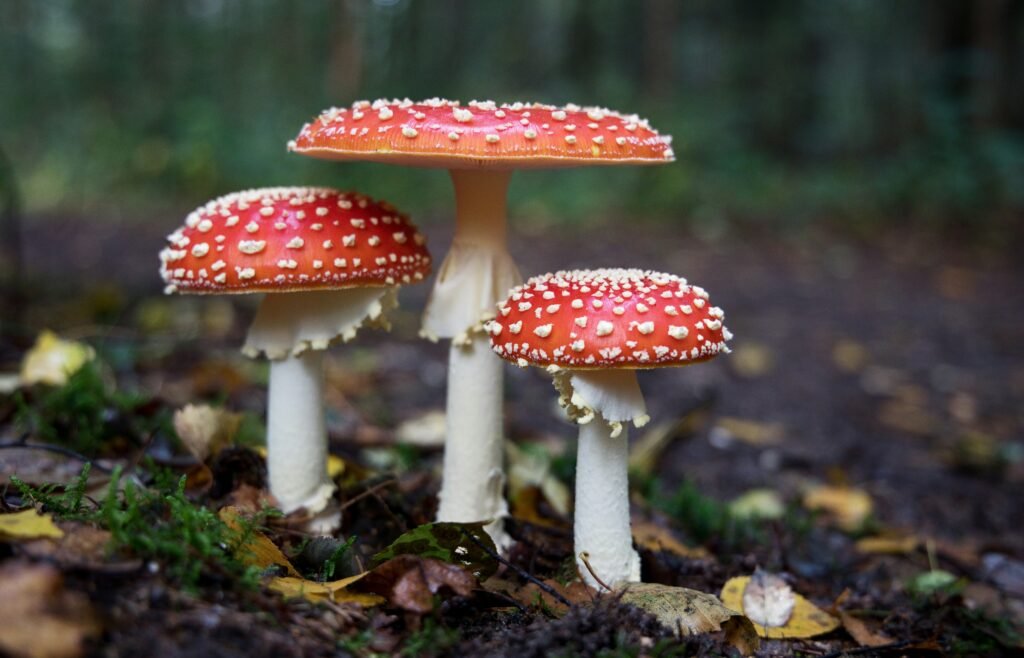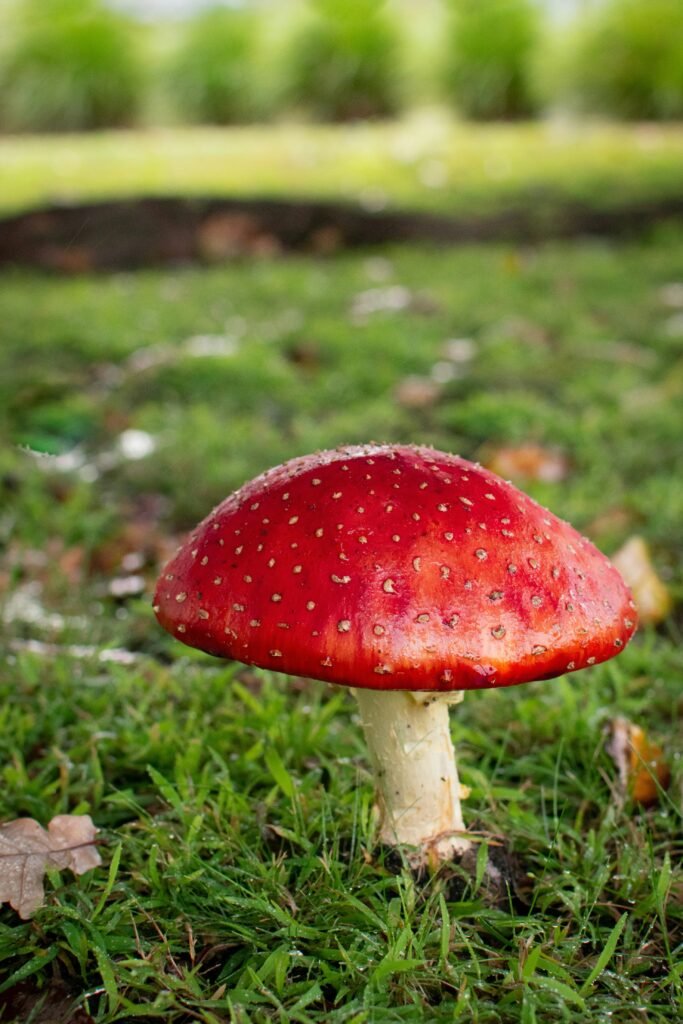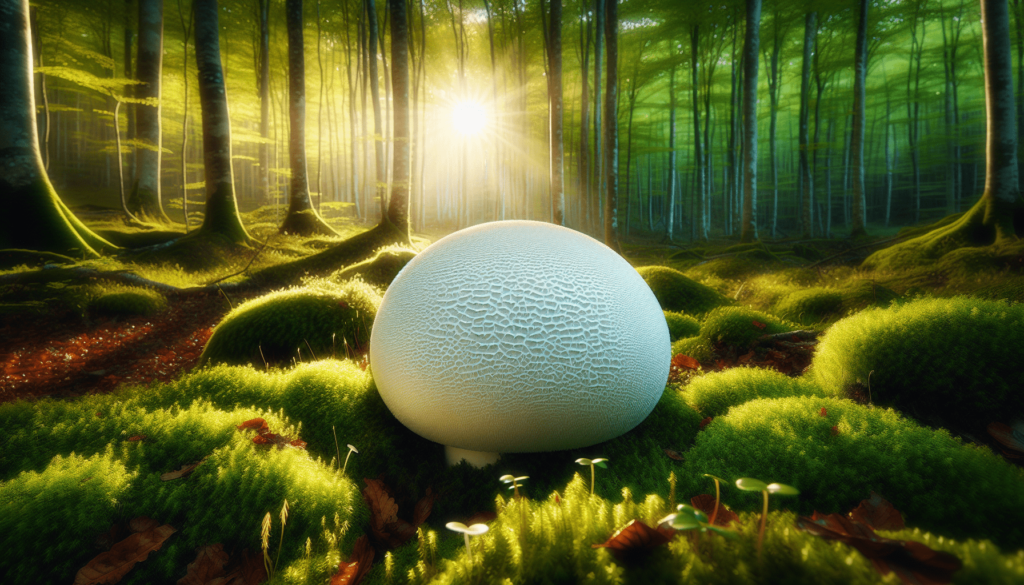If you’ve ever been in awe of the wonders of nature, then the Giant Puffball Mushroom, scientifically known as Calvatia Gigantea, is bound to capture your attention. This extraordinary mushroom, as the name suggests, grows to enormous sizes, making it an intriguing and visually captivating marvel. With its distinct features and unique lifecycle, the Giant Puffball Mushroom has fascinated botanists and nature enthusiasts alike for centuries. Join us as we explore the enchanting world of this remarkable mushroom and discover the secrets hidden within its impressive facade.

Overview of Calvatia Gigantea
Calvatia Gigantea, commonly known as the Giant Puffball Mushroom, is an extraordinary species that belongs to the family Agaricaceae. It is renowned for its massive size and distinct round shape, making it a remarkable find for mushroom enthusiasts and nature lovers alike. In this article, we will delve into the various aspects of this unique mushroom, including its description, habitat and distribution, edibility, identification, lifecycle, uses and benefits, as well as cautions and considerations.
Description
The Giant Puffball Mushroom is aptly named due to its impressive size, with specimens often reaching diameters of 30 to 90 centimeters. The fruiting body of this mushroom is spherical, resembling a giant white ball, and lacks the typical cap and stem structure found in most mushrooms. When young, it has a smooth and firm texture, but as it matures, it transforms into a soft and powdery mass, which gives rise to its other common name, the “puffball.” The outer layer of the mushroom, known as the peridium, is thick and leathery, protecting the internal spore mass.
Habitat and Distribution
Calvatia Gigantea can be found in various habitats across the globe, including meadows, pastures, grassy areas, and even woodlands. It thrives in nutrient-rich soil and is often associated with decaying organic matter, such as decomposing logs or animal dung. This mushroom is widespread, and its distribution ranges from North America, Europe, and Asia to other parts of the world with suitable environmental conditions. While it prefers temperate regions, it has also been observed in subtropical and tropical areas.
Edibility
The Giant Puffball Mushroom holds the distinction of being one of the few species of fungi that is generally considered safe and delicious to eat when it is still young and firm. However, caution must be exercised during identification, as there are similar-looking species that are toxic and should be avoided. It is essential to gather the mushroom when it is still pure white, without any signs of discoloration or decay. The firm and compact flesh has a mild and delicate flavor, making it a fantastic addition to stir-fries, soups, omelets, and various other culinary creations. As the mushroom matures, it becomes inedible due to the development of spores and the accompanying decomposition.

Identification
Physical Characteristics
Apart from its remarkable size, the Giant Puffball Mushroom has several distinctive physical characteristics that aid in its identification. When young, it showcases a pure white coloration throughout its entire fruiting body. The outer surface is smooth and often has a velvety texture, adding to its uniqueness. It lacks gills, instead, relying on the internal spore mass to disperse its reproductive spores. As it matures, the mushroom undergoes a dramatic transformation, turning into a brownish or olive color, and eventually releasing a cloud of spores when disturbed.
Similar Species
Though the Giant Puffball Mushroom is relatively easy to identify, there are a few similar species that should be taken into consideration. The closely related Calvatia Utriformis, commonly known as the Pear-shaped Puffball, shares similar characteristics but has a distinct pear-like shape. It is generally smaller and has a rougher peridium compared to Calvatia Gigantea. In addition, there are other puffball species, such as Lycoperdon perlatum, that resemble the Giant Puffball Mushroom during their younger stages but have different physical features and edibility properties when mature.
Lifecycle
Spore Production
The lifecycle of the Giant Puffball Mushroom revolves around its spore production. When the mushroom reaches maturity, the peridium ruptures, creating an opening through which the millions of spores are released into the surroundings. This process is triggered by factors such as rain or physical disturbances. The spore mass within the fruiting body is powdery and resembles a fine flour, hence the name “puffball.” The spores are then dispersed by various means, including wind and animals, to find suitable locations for germination and growth.
Germination
Once dispersed, the spores of Calvatia Gigantea require favorable conditions to germinate. Factors such as moisture, temperature, and suitable substrates play crucial roles in the germination process. Should the spore land on an appropriate substrate, such as decomposing organic matter, it develops into mycelium, a network of thread-like structures that serve as the vegetative body of the fungus. This mycelial network functions to absorb nutrients and continue the growth cycle of the mushroom.
Development
As the mycelium develops, it gradually forms the primordial fruiting body, which ultimately matures into the characteristic giant puffball. This growth process can take several weeks or even months, depending on environmental conditions and the availability of nutrients. Once the fruiting body reaches maturity, it becomes ready for spore production and subsequent dispersal, thus completing the lifecycle of Calvatia Gigantea.

Uses and Benefits
Culinary Uses
The Giant Puffball Mushroom has gained popularity among gastronomes and chefs for its culinary potential. When harvested at the right stage, it offers a unique texture and delicate flavor, making it a sought-after ingredient in various dishes. Its mild taste allows it to absorb the flavors of accompanying ingredients, enhancing the overall taste of the dish. From being sautéed to added in soups, stews, and even used as a meat substitute in vegetarian recipes, this versatile mushroom adds a touch of elegance and novelty to culinary creations.
Medicinal Potential
Beyond its gastronomic delight, research suggests that the Giant Puffball Mushroom may possess medicinal properties as well. Some studies have shown that compounds found in this mushroom, such as polysaccharides and triterpenes, exhibit potential anti-inflammatory and antioxidant effects. These properties could have applications in various health conditions and may contribute to overall well-being. However, further research is needed to fully explore and utilize the medicinal potential of this intriguing mushroom.
Cautions and Considerations
Toxicity
While the Giant Puffball Mushroom is generally considered safe for consumption when young and pure white, caution should always be exercised when foraging and preparing wild mushrooms. It is vital to correctly identify the species, as there are similar-looking mushrooms that are toxic and can cause severe illness or even death. Avoid consuming any mushroom that shows signs of decay, discoloration, or has a foul odor. If unsure about the identification, consult an experienced mycologist or consider refraining from consumption altogether.
Allergy Potential
For individuals with allergies to mushrooms, caution should be taken when consuming any species, including the Giant Puffball Mushroom. Allergic reactions can range from mild to severe, including symptoms such as itching, hives, stomach upset, or even anaphylaxis in extreme cases. If you have a known mushroom allergy or experience any adverse reactions after consuming mushrooms, it is best to avoid consumption to prevent potentially serious health consequences.
Legal Protections
In certain regions, there may be legal protections in place to safeguard wild mushrooms, including the Giant Puffball Mushroom. It is essential to familiarize yourself with local regulations and adhere to them when foraging or collecting mushrooms. Moreover, be mindful of the habitats where these mushrooms grow and practice sustainable and responsible harvesting techniques. By respecting legal protections and maintaining the ecological balance, we can ensure the continued existence and enjoyment of these fascinating fungi for generations to come.

